It’s a fascinating world we live in; and the deeper into its secrets we delve, the more there is to discover. That’s probably the reason all sorts of informative platforms online—whether they’re focused on videos, podcasts, or other formats—seem to be blooming nowadays.
One of such rabbit holes of information about anything and everything in life is the ‘fasc1nate’ account on X (Twitter). The posts, enthralling you to scroll for hours, cover information about science, gadgets, history, art, and much more, providing a little something for everyone to enjoy. We have gathered some of the most captivating examples shared by the account on this list for you today, so wait no longer and scroll through to learn something new.
#1
In 1913, 10-year-old Sarah Rector received a land allotment of 160 acres in Oklahoma. The best farming land was reserved for whites, giving her a barren plot. Oil was discovered there, and she became one of the country's first black millionaires
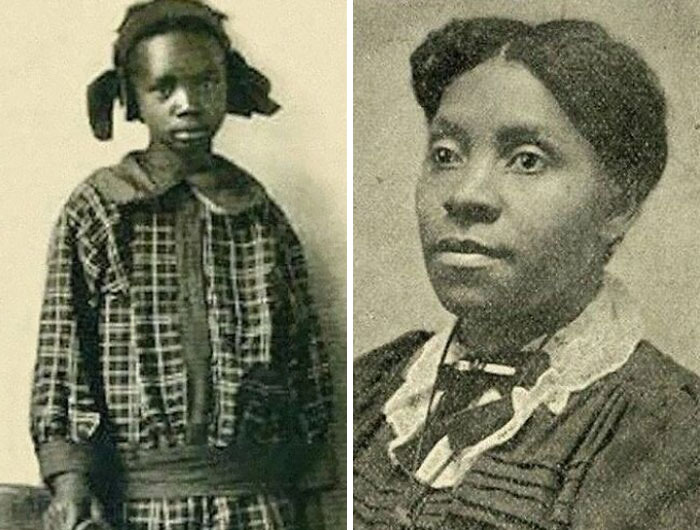
Image credits: fasc1nate
#2
The crew of Return of the Jedi mocked Admiral Ackbar's ugly character design. Director Richard Marquand refused to alter it, saying, "I think it's good to tell kids that good people aren't necessarily good-looking people & that bad people aren't necessarily ugly people."

Image credits: fasc1nate
#3
From 1940 to 1944, Corrie ten Boom and her family used their home in the Netherlands as a hiding place for Jews fleeing the Nazis. They had built a safe room in their home above the family shop on Barteljorisstraat in the Dutch city of Haarlem. There, Corrie ten Boom, her sister, and their father would save the lives of some 800 Jews fleeing the Nazis. The ten Boom family joined the Dutch resistance after Germany invaded the Netherlands in 1940. Guided by their religious beliefs, they quietly funneled desperate Jewish refugees to safety. But in 1944, an informer sent the Nazis straight to their door. Corrie ten Boom survived her time in concentration camps — barely — but her father and sister did not. Once the war ended, she set up a rehabilitation clinic for Holocaust survivors, preached the power of forgiveness, and wrote books about her experience.

Image credits: fasc1nate
#4
Born into slavery, Bass Reeves eventually won his freedom and became the first Black U.S. Marshal west of the Mississippi River, becoming one of the most legendary lawmen of the Old West. Reeves excelled at capturing outlaws, using disguises and cunning tactics. He was responsible for arresting thousands of criminals over his remarkable career. Despite rampant racism, he upheld his duty with unwavering principles

Image credits: fasc1nate
#5
The small French village of Chambon-sur-Lignon received a surprise $2.4 million gift in the will of a 90-year-old Austrian man named Eric Schwam. Shocked officials soon learned that Schwam was paying the town back for saving him and his family from the Nazis 80 years earlier. He asked that the town use the money to fund education initiatives and scholarships for the local children
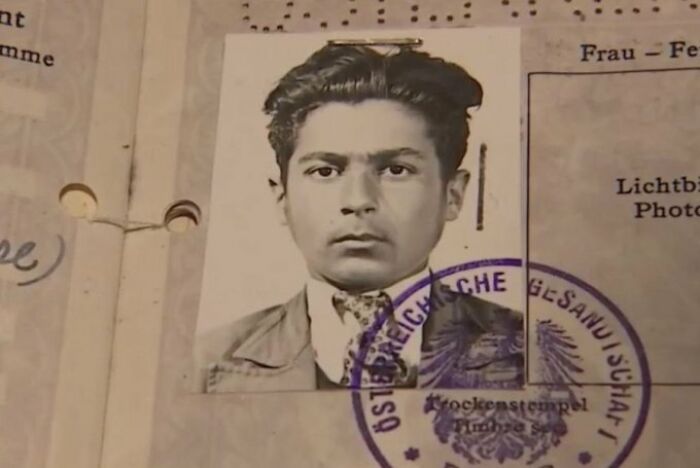
Image credits: fasc1nate
#6
In 1999, Mustafa Xaja, a Kosovo-Albanian, shared heart-wrenching photographs of his children, whom he believed to have tragically perished during the war in Kosovo. Recently released from captivity by the Serbs, he was compelled to flee across the border, seeking refuge in Albania. Only after the conflict had ended did he learn the joyous news that his family had survived unharmed

Image credits: fasc1nate
#7
In the 1880s, the Harvard Observatory director was frustrated with his staff, and would say "My Scottish maid could do better!" So, he hired his Scottish maid. Williamina Fleming, who discovered tens of thousands of stars and more
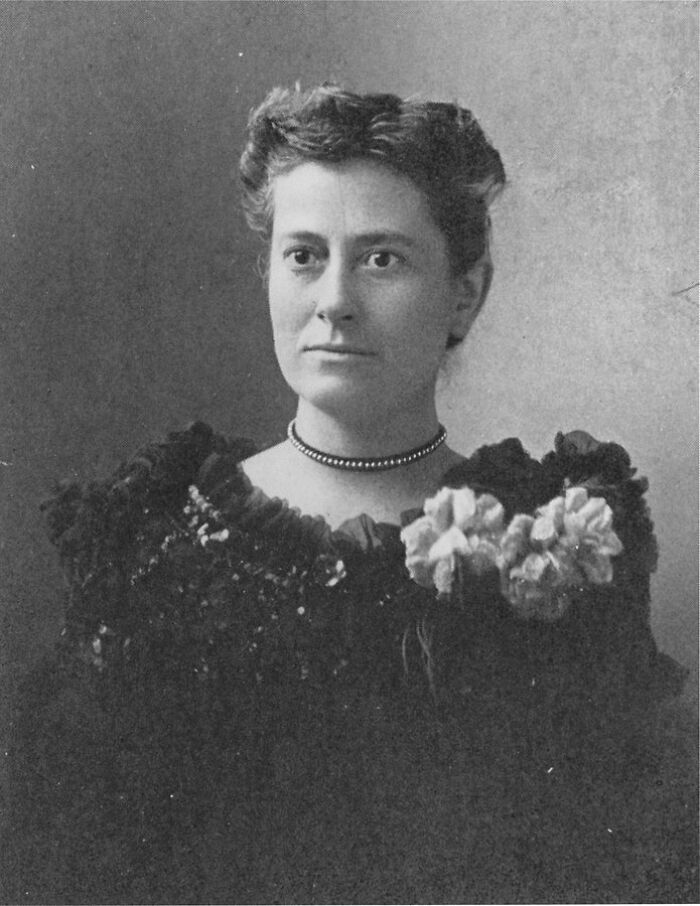
Image credits: fasc1nate
#8
Kim Ung-Yong started speaking at the age of 6 months. He could fluently speak four languages (Korean, Japanese, German, English) at the age of two. At three, he understood and could solve Algebra. At age eight, he was invited to America by NASA as a researcher, where he got his MSc at fifteen
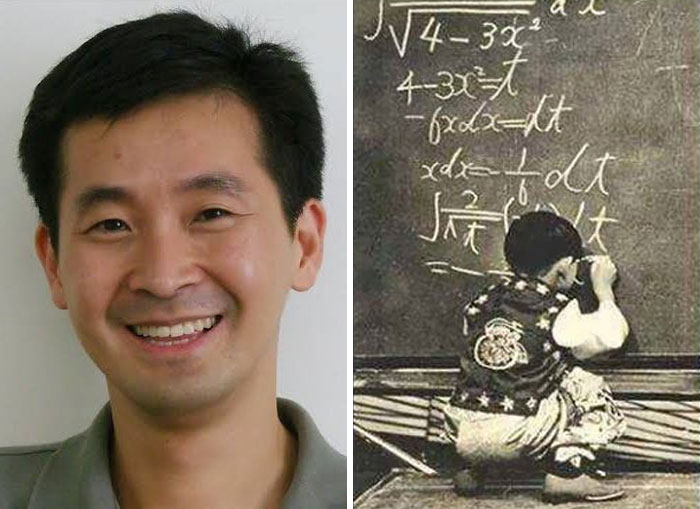
Image credits: fasc1nate
#9
Four seasons in the same place taken by Jozef Morgos in Žabokreky, Slovakia

#10
Two little girls save their Teddy bear during the May blitz, Liverpool, 1941
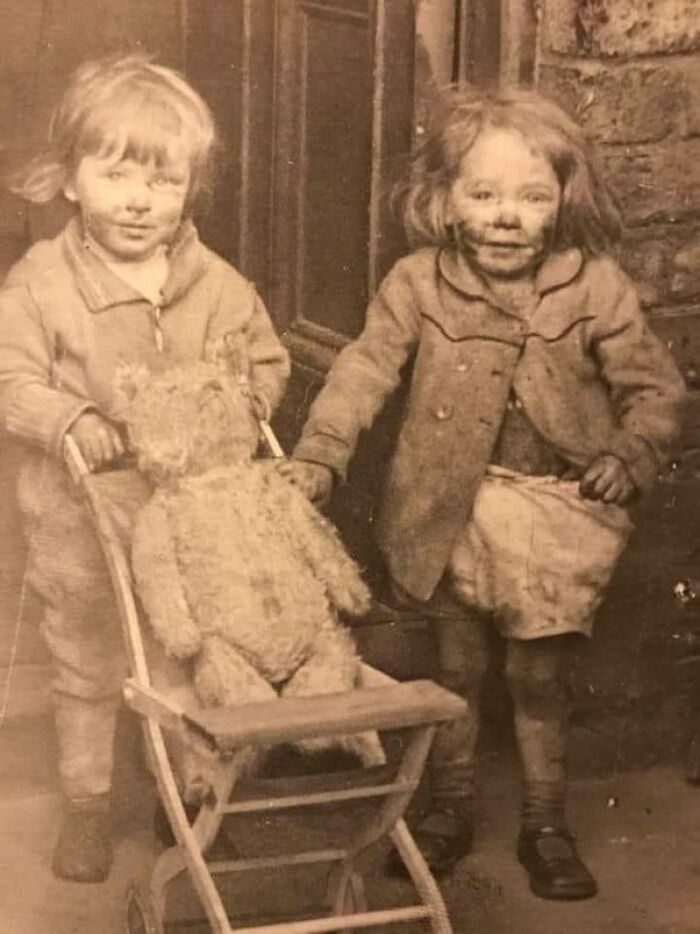
Image credits: fasc1nate
#11
Nellie Bly was an American journalist, who undertook a journey around the world in 1889. Inspired by Jules Verne's famous novel, "Around the World in Eighty Days," Bly aimed to complete her journey in less time. With only two days' notice, she packed a small bag and left New York on a steamer heading east. Bly reported her experiences and observations through telegrams to her newspaper, the New York World. She arrived back in New York just 72 days after her departure, setting a new world record, and even had enough time to interview Jules Verne during her travels
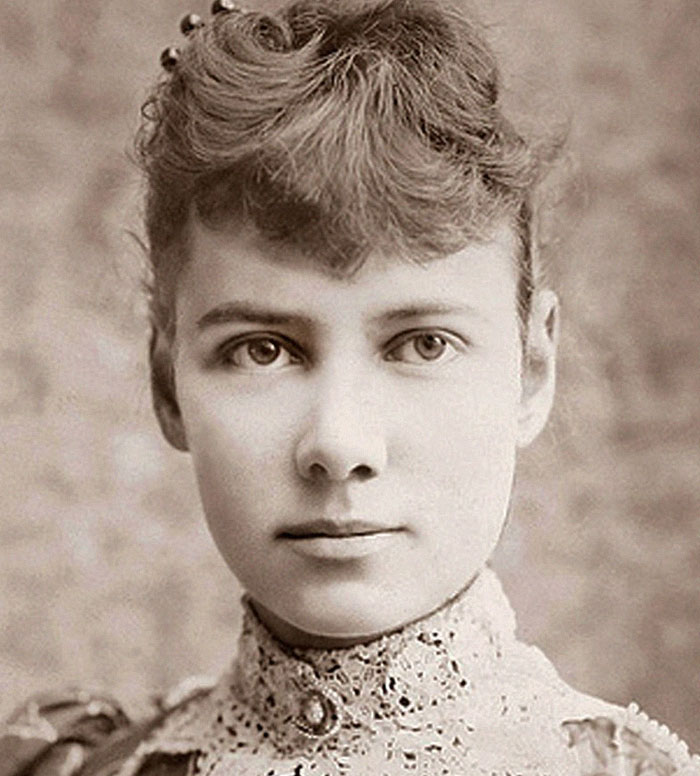
Image credits: fasc1nate
#12
MIT will award you a Certificate in Piracy if you take archery, pistols, sailing, and fencing as your physical education classes

Image credits: fasc1nate
#13
Julia Butterfly Hill is an environmental activist who lived on a 1500-year-old California redwood tree she named Luna for 738 days between 1997 and 1999 to prevent it from being chopped down by a logging company. Her actions saved the tree from being chopped down. In this photo by Yann Gamblin, you can see Julia in her treetop home
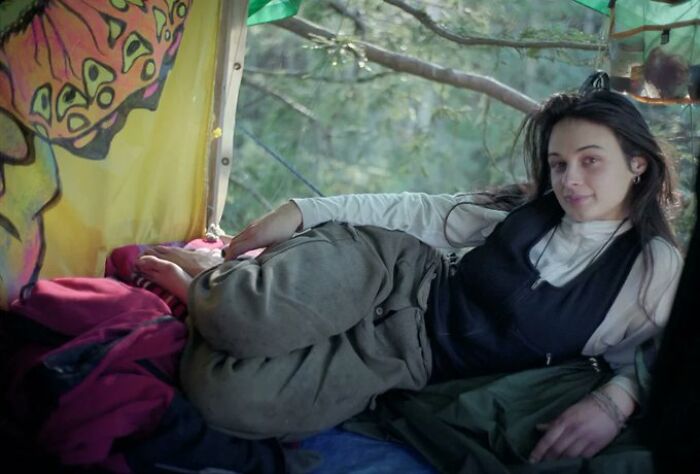
Image credits: fasc1nate
#14
Sleeping Squirrels in their nest on a window ledge. Photo by Ludwig C. Timm

Image credits: fasc1nate
#15
Statue of King Arthur by Rubin Eynon, Tintagel Castle, England
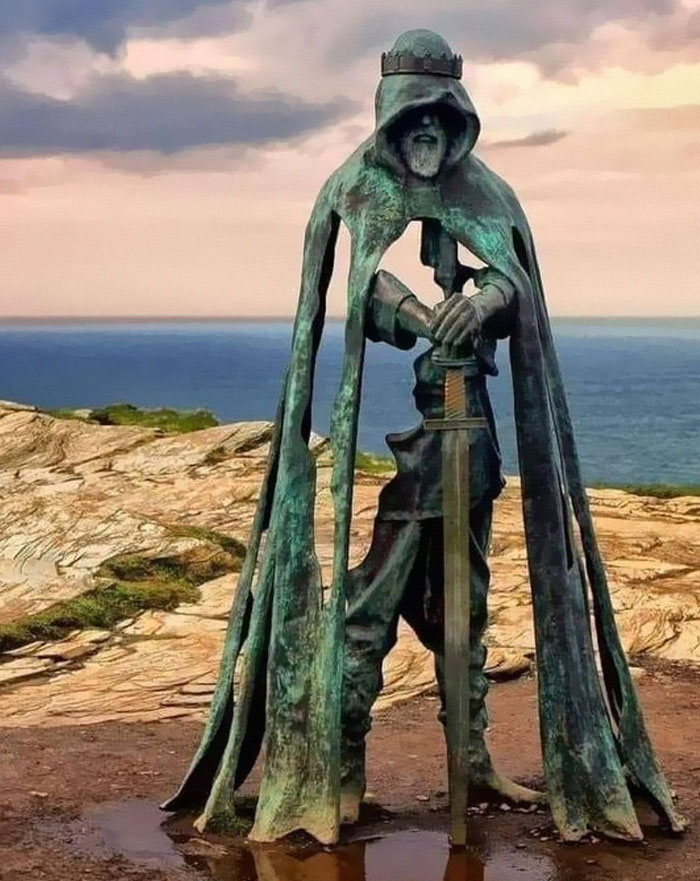
Image credits: fasc1nate
#16
There's a resort in Finland where you can camp in a glass igloo and lay back and watch the aurora borealis

Image credits: fasc1nate
#17
The stunning wooden spiral staircase of Peles Castle. Sinaia, Romania

Image credits: fasc1nate
#18
Sheikh Lotfollah Mosque is a masterpiece of Persian architecture. It was built during the Safavid Empire, standing on the eastern side of Naqsh-i Jahan Square, Esfahan, Iran

Image credits: fasc1nate
#19
The "Blue Fugates" were a Kentucky family with a hereditary trait resulting in a blue tint to their skin that baffled people for generations
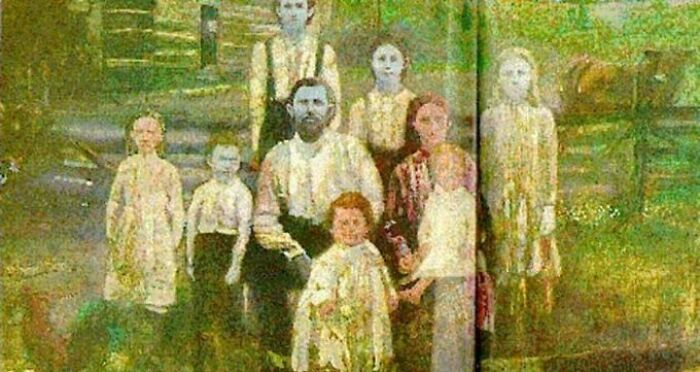
Image credits: fasc1nate
#20
In 1990, the windshield of British Airways Flight 5390 came off at an altitude of 17,000 feet. This triggered a sudden decompression in the cockpit, resulting in the captain being partially ejected out of the aircraft. As luck would have it, Nigel Ogden, a flight attendant, was on his way into the cockpit at that moment. He managed to grab hold of the captain and maintain his grip for over 20 minutes while the copilot attempted an urgent landing. Although the majority of the crew presumed that the pilot had already lost his life, Ogden did not let go. There was a prevailing fear that if Ogden did release his hold, the pilot's body might strike the plane's engine, wing, or stabilizer, causing even more chaos. All Ogden knew was that the pilot was gradually slipping more and more out of the window and his head was continuously being battered against the airplane's body. Finally, after a distressing 20-minute flight with a gaping window, the aircraft was safely brought down at Southampton Airport. In the course of events, Ogden suffered from frostbite on his face, damage to one of his eyes, and a dislocated shoulder. In a miraculous turn of events, the pilot survived the ordeal, although he had frostbite and multiple fractures on his arms and hands. The image is a recreation from the television series "Mayday!"

Image credits: fasc1nate
#21
An acrobatic archer competing in the 2016 World Nomad Games in Kyrgyzstan

Image credits: fasc1nate
#22
This oak door belonging to Westminster Abbey is the oldest door in Great Britain. It has been standing for over 950 years, dating back to the reign of Edward the Confessor in the 1050s. The door was made from a single oak tree
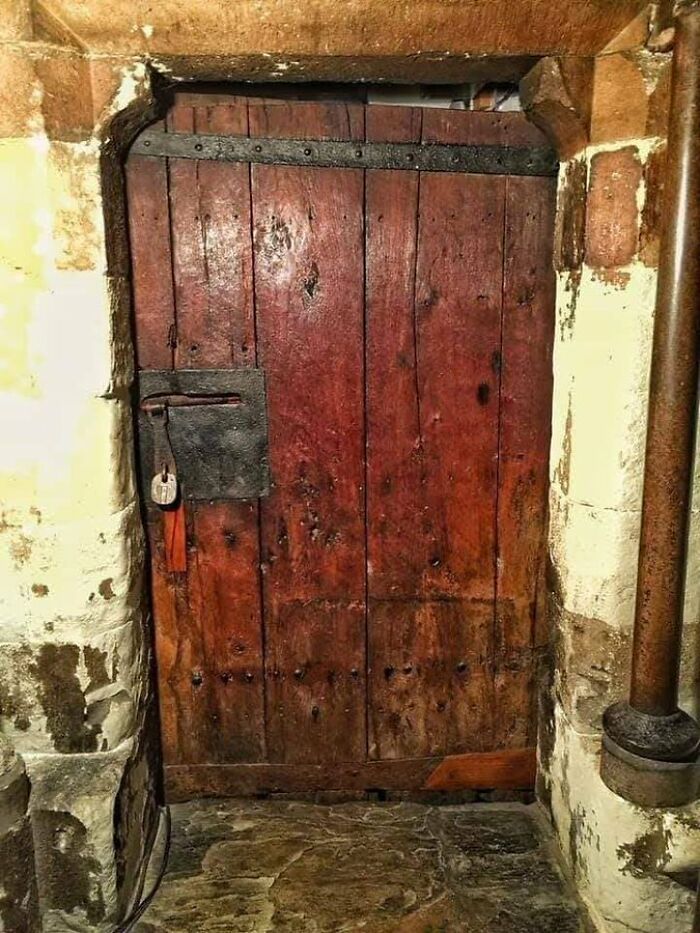
Image credits: fasc1nate
#23
When she was 23, Rosemary Kennedy, the sister of JFK and RFK, had a forced lobotomy arranged by her father. The surgery left her incapacitated for the rest of her life

Image credits: fasc1nate
#24
On March 18, 1944, 27-year-old Aimo Koivunen and his Finnish ski unit were in Lapland, Finland's northernmost region, when they were attacked by superior Soviet forces. Forced to retreat through deep snow, Koivunen found himself exhausted. He remembered he had a supply of Pervitin, an early form of crystal meth used in World War 2. Unable to open just one pill while skiing away, he swallowed all 30 pills. This gave him an immediate burst of energy, allowing him to outpace the Soviets and his unit before passing out. When he woke up, he'd covered 100 kilometers (62 miles) alone and high, without food or ammunition. He kept skiing, encountering the Soviets multiple times but always escaping, even after an injury from a landmine. He traveled 400 kilometers (250 miles) to reach Finnish territory. Upon arrival, he weighed only 94 pounds, and his heart raced at 200 beats per minute. He survived until age 71, dying in 1989.
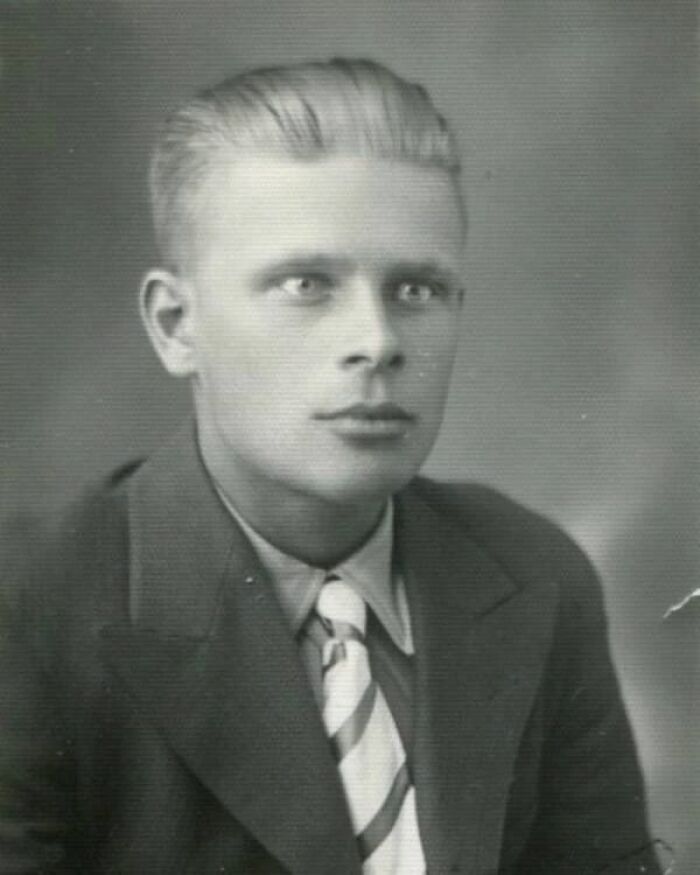
Image credits: fasc1nate
#25
1,500-year-old Ceramic Maya Figurine with Removable Helmet, from El Perú-Waka', Petén, Guatemala
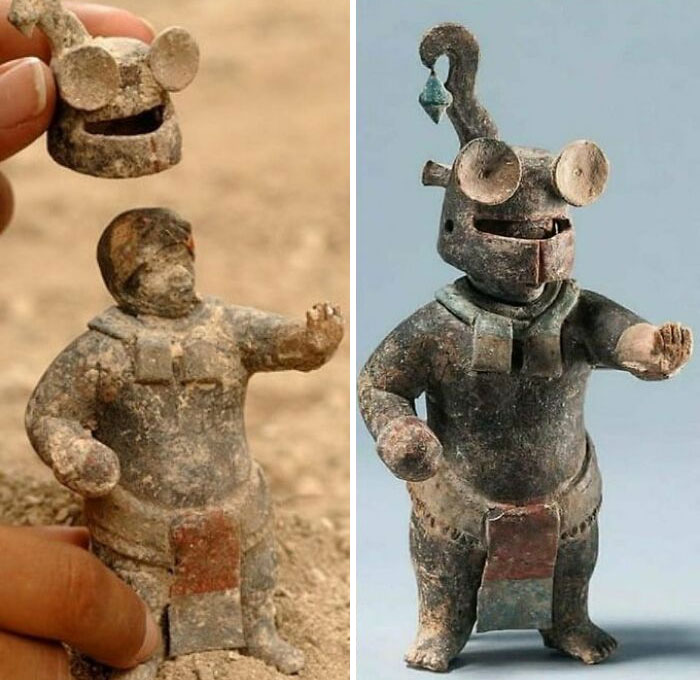
Image credits: fasc1nate
#26
Portrait of a young grumpy girl, 1850s
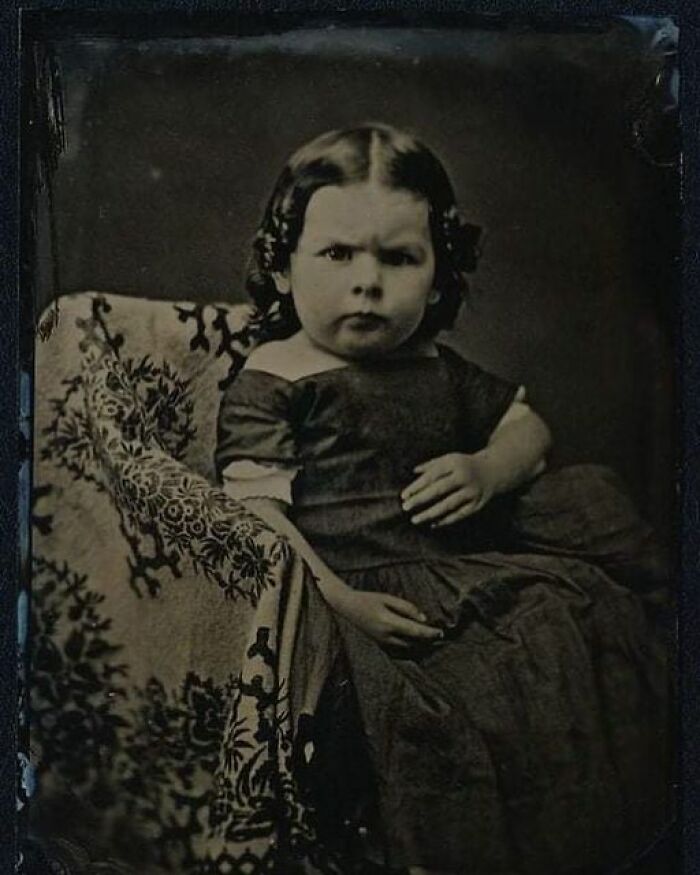
Image credits: fasc1nate
#27
Saudi Arabia accidentally printed thousands of textbooks containing this image of Yoda sitting next to King Faisal while he signed the 1945 UN charter

Image credits: fasc1nate
#28
The "Time Lady" or "the Speaking Clock" before the introduction of automated equipment. Her job: giving the correct time 'live' all day long. C. 1930s

Image credits: fasc1nate
#29
At its height, around four centuries before Columbus arrived in the Americas, Cahokia was a thriving pre-American city with a population comparable to that of London at the time. Situated in southern Illinois, just eight miles from today's St. Louis, it likely held the title of the biggest city in North America north of Mexico during its era. The Mississippians, Native Americans who spanned much of what is now the southeastern U.S., from the Mississippi River to the Atlantic coast, were its builders. Despite Cahokia being advanced and worldly for its era, its story remains largely unfamiliar to many Americans, including those in present-day Illinois. This image is a painting by Michael Hampshire.

Image credits: fasc1nate
#30
1,200 stone sculptures with different facial expressions at the nenbutsu-Ju Buddhist temple in Kyoto, Japan

Image credits: fasc1nate
#31
A rare early 19th-century photo of the Great Sphinx from a hot air balloon. This is before it was excavated and restored
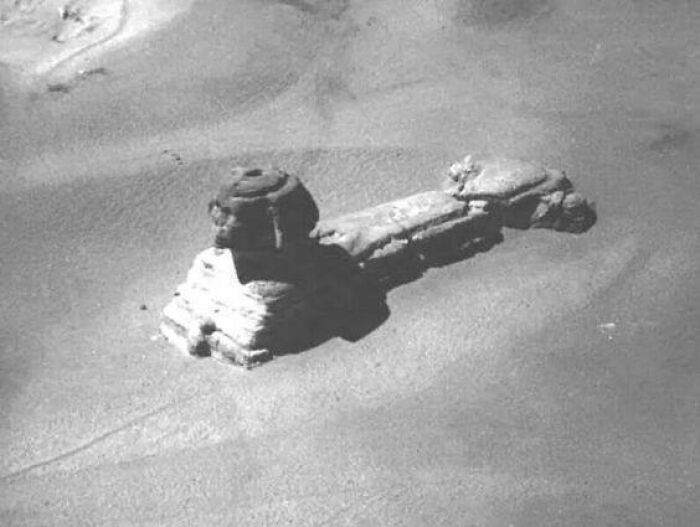
Image credits: fasc1nate
#32
Before and after the excavation and restoration of the Ziggurat of Ur. The Ziggurat of Ur was built around 4000 years ago by King Ur-Nammu of the Neo-Sumerian Empire, is one of the oldest surviving temples in Iraq. Located near Nasiriyah, it showcases religious practices from around 2050 BC. The site was discovered in 1850 and was extensively excavated in the 1920s and 1930s. However, it suffered damage during the 1991 Gulf War. Today, excavations still occur, revealing more artifacts and findings

Image credits: fasc1nate
#33
In 1931, two psychologists, Winthrop and Luella Kellogg, began an experiment to see if a chimpanzee could learn human behavior by raising it with their own baby. The idea was to see if the chimp, named Gua, would learn to walk upright, speak, and engage in other human-like activities. For the first few months, the experiment was going well. Gua learned to mimic some of the actions of Kelloggs' son, Donald. However, after 9 months, the Kelloggs were forced to cancel the experiment. It turns out that Donald was beginning to behave like an ape himself, mimicking Gua's behaviors and even attempting to communicate with grunts and other animal-like sounds
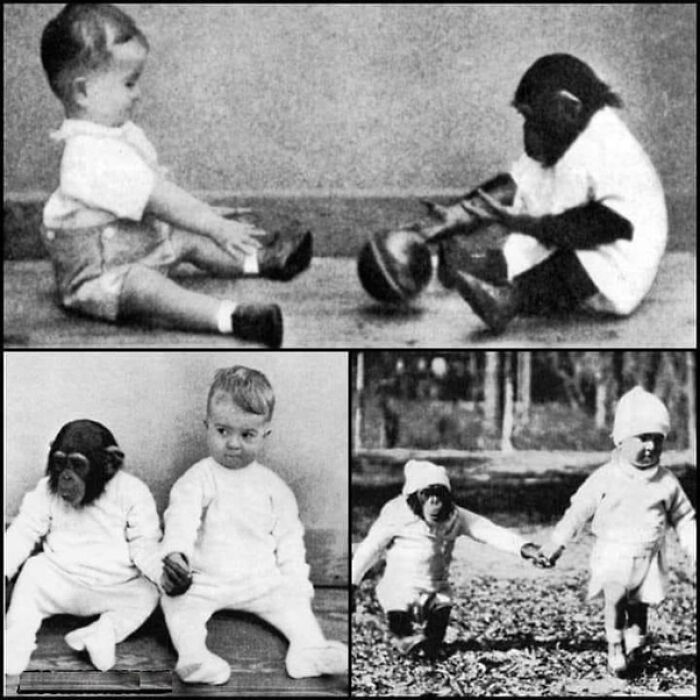
Image credits: fasc1nate
#34
A makeshift hospital during The Vietnam War, 1970
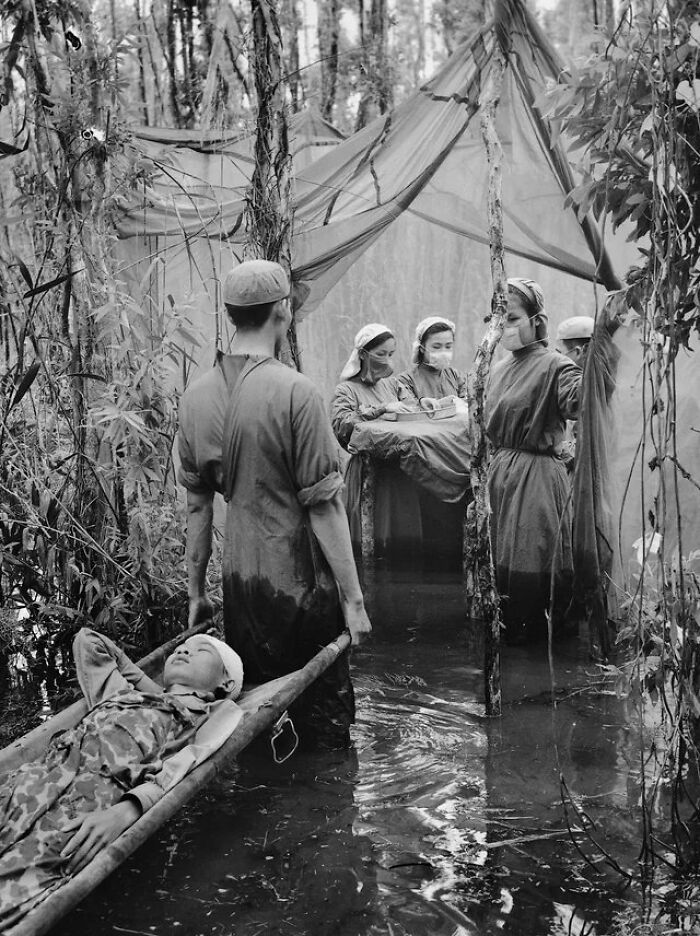
Image credits: fasc1nate
#35
A 2000-year-old Thracian chariot with horse skeletons discovered by archaeologist Veselin Ignatov.

#36
In 1863, Civil War veteran Jacob Miller was shot in the forehead at Brock Field at Chikamauga, Georgia. He had the following to say about it: "When I came to my senses some time after I found I was in the rear of the confederate line. So not to become a prisoner I made up my mind to make an effort to get around their line and back on my own side. I got up with the help of my gun as a staff, then went back some distance, then started parallel with the line of battle. I suppose I was so covered with blood that those that I met, did not notice that I was a Yank, (at least our Major, my former captain did not recognize me when I met him after passing to our own side). I suffered for nine months then I got a furlough home to Logansport and got Drs. Fitch and Colman to operate on my wound. They took out the musket ball. After the operation a few days, I returned to the hospital at Madison and stayed there till the expiration of my enlistment, Sept. 17, 1864. Seventeen years after I was wounded a buck shot dropped out of my wound and thirty one years after two pieces of lead came out. Some ask how it is I can describe so minutely my getting wounded and getting off the battle field after so many years. My answer is I have an everyday reminder of it in my wound and constant pain in the head, never free of it while not asleep. The whole scene is imprinted on my brain as with a steel engraving. I haven’t written this to complain of any one being in fault for my misfortune and suffering all these years, the government is good to me and gives me $40.00 per month pension."
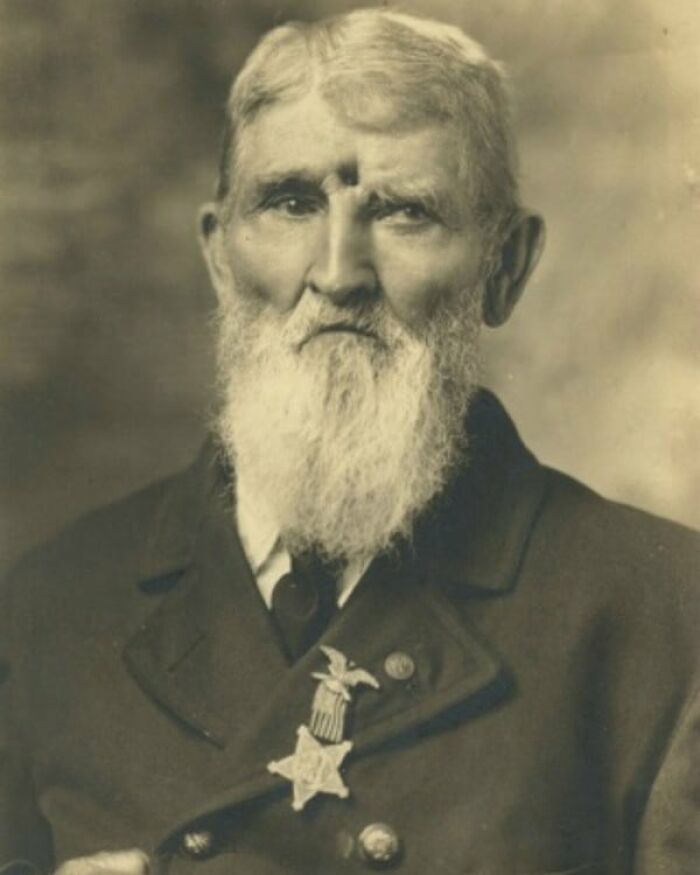
Image credits: fasc1nate
#37
Physicists and Nobel Prize winners Marie Curie and Pierre Curie shortly after their wedding. France, 1895
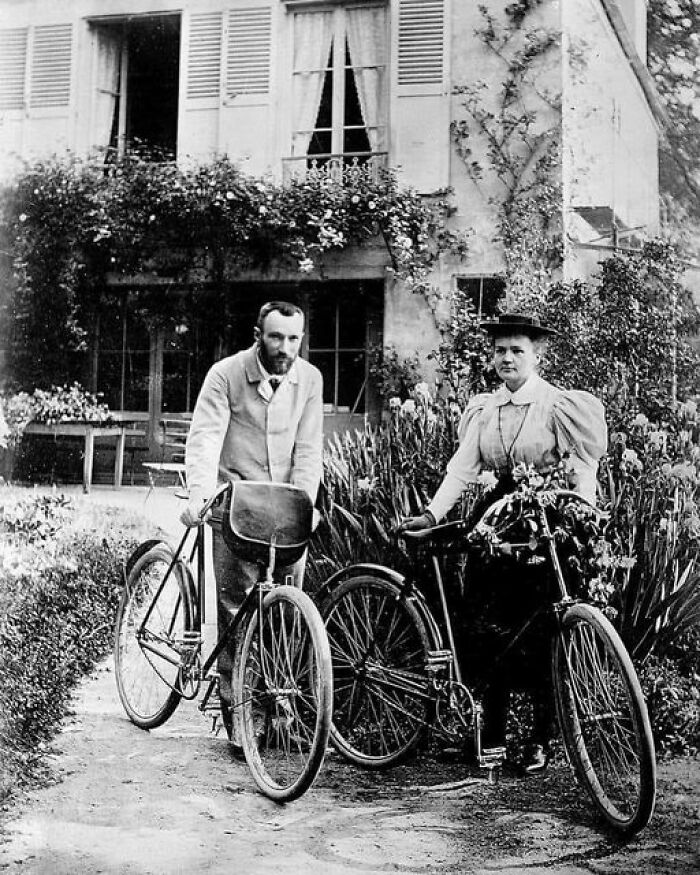
Image credits: fasc1nate
#38
Cotton mill workers, Georgia, 1909

Image credits: fasc1nate
#39
This is a crusader sword dating back 900 years. The discovery was made by Shlomi Katzin whilst he was scuba diving a natural cove near the ancient port city, that the crusaders captured from the Arabs during the early 12th century AD
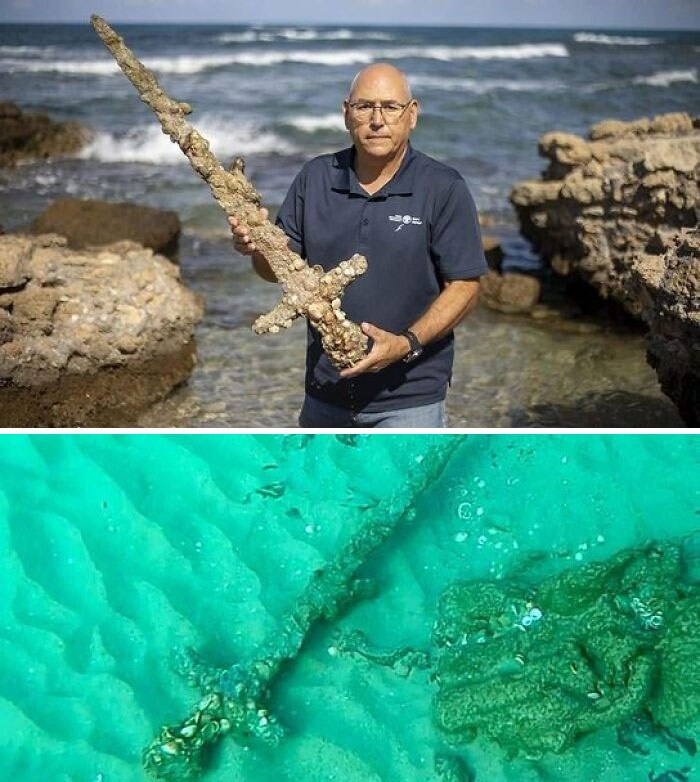
Image credits: fasc1nate
#40
A Roman military diploma was discovered in Croatia in 1997. This ancient document, found in a river, dates all the way back to 71 AD. These military diplomas were like golden tickets for retiring Roman soldiers. They were evidence of an honorable discharge from the Roman army and came with great perks. For instance, the diploma granted Roman citizenship to the soldier and their entire family. These privileges went beyond just bragging rights. Roman citizenship came with tangible benefits, like being exempt from certain taxes, enjoying legal protection, and even the possibility of holding public office. But what truly sets this discovery apart is that the diploma still bears the wax seals of those who witnessed the document. These seals were pressed onto the diploma to authenticate its contents and prove its legitimacy.

Image credits: fasc1nate
#41
When an octopus' tentacle (arm or leg) is split, most often due to fighting, something called "over-regeneration can occur during the healing process.If this happens repeatedly, the octopus can have dozens of tentacles. The most ever counted was on an Octopus found in Matoya Bay, Japan, 1998. It had 96
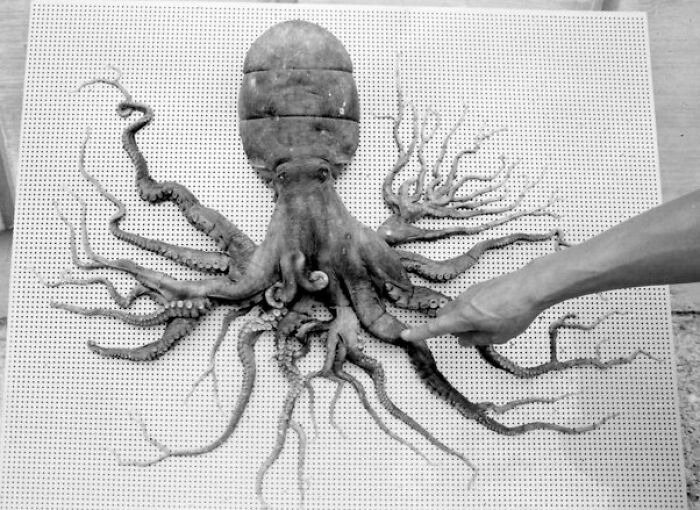
Image credits: fasc1nate
#42
Shortly after 9:30pm on Friday, 3 December 1926, Agatha Christie got up from her armchair and climbed the stairs of her Berkshire home. She kissed her sleeping daughter Rosalind, aged seven, goodnight and returned downstairs again. Then she climbed into her Morris Cowley and drove off into the night. She would not be seen again for 11 days. Her disappearance would spark one of the largest manhunts ever mounted. Agatha Christie was already a famous writer; more than one thousand policemen and hundreds of civilians were assigned to the case.
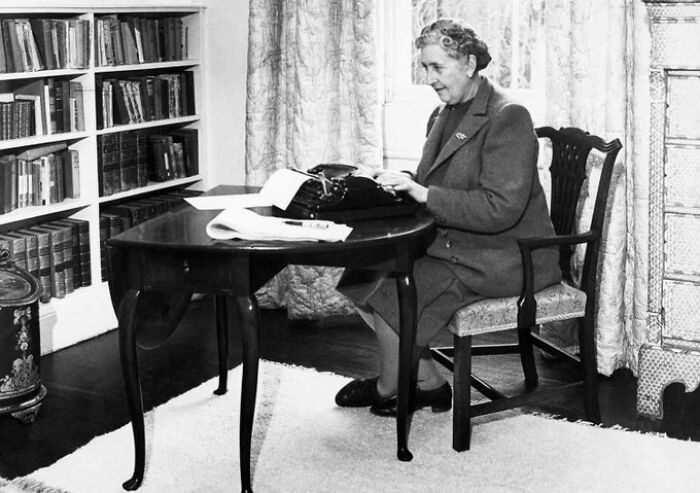
Image credits: fasc1nate
#43
Lombard street in San Francisco, 1975

Image credits: fasc1nate
#44
2,000-year-old face cream inside a metal container from Roman times with visible ancient finger marks. "The cream was composed of refined animal fat, starch, and tin. The researchers then created their own version, made to the same recipe. When they rubbed the whitish cream into their skin, it produced a white layer with a smooth powdery texture. The latter quality was created by the starch—still used for this purpose in modern cosmetics." Professor Richard Evershed from Bristol University said, "White face paint was fashionable in Roman times and normally derived its colour from a lead compound. A tin compound would have been an acceptable substitute and in good supply from Cornwall." In ancient Rome, lead was the most popular metal and was commonly used in cups, plates, coins, pipes, cosmetics, face powder, paints, food seasoning, and even birth control. Scientists have even discovered that tap water from ancient Rome contained up to 100 times more lead than local spring water. As a result, some historians have speculated that lead poisoning may have played a part in bringing down the Roman Empire

Image credits: fasc1nate
#45
During the mid-19th century, Paris faced significant challenges in managing the growing issue of public urination. To address this, the city installed cast iron and masonry public urinals on the curbs of streets. One such example is the urinal in Paris, France, dating back to 1865. These urinals were designed to drain directly into the underground sewer system, providing a convenient and hygienic solution for the city's sanitation needs. This innovative approach helped alleviate the problem of public urination, which was becoming a major concern in urban areas. These urinals represented a step forward in urban planning and public health, as they improved sanitation conditions and contributed to the overall cleanliness of the city.
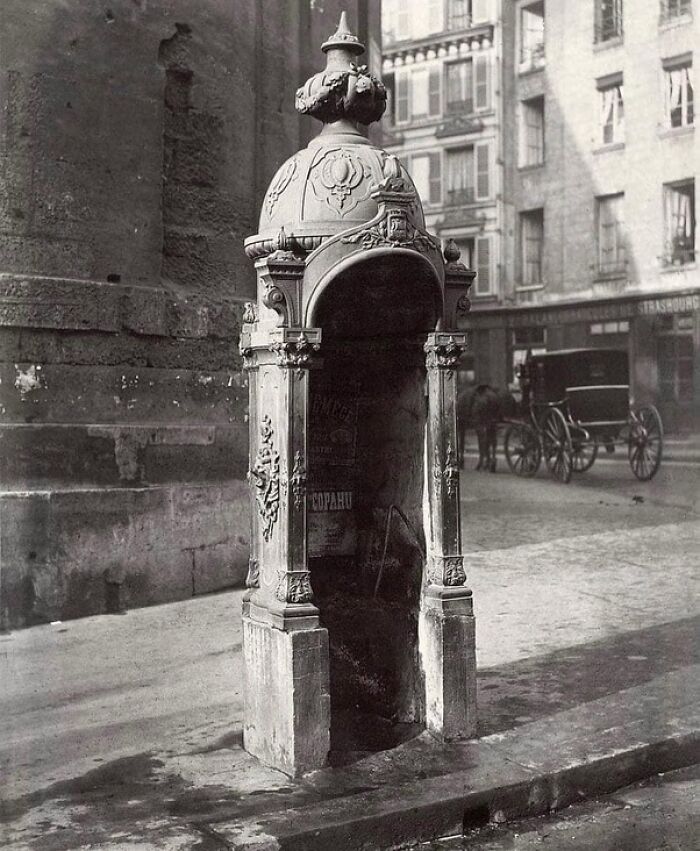
Image credits: fasc1nate
#46
In 1989, a powerful photograph captured the attention of the world and shed light on the resilience and sacrifice of war veterans. The image, taken by Ivan Kurtov, depicted Anatoly Golimbievsky, a decorated veteran who had lost both legs during World War II, being saluted by four young sailors. The photograph was part of a larger photo story that Kurtov had been working on, focusing on the life of Golimbievsky. Kurtov had the opportunity to meet the veteran on Victory Day, celebrated on May 9th in Russia, when he was sent to a veterans meeting in Leningrad by his press agency, ITAR-TASS. To honor Golimbievsky, Kurtov decided to stage a photo shoot with the veteran. He contacted the Nakhimov school for Naval Cadets and requested around 30 sailors to participate. However, only three sailors and one officer were sent to him. Despite this, Kurtov proceeded with the shoot. Originally, Kurtov had planned to capture the photograph against the backdrop of the iconic cruiser 'The Aurora,' which was docked opposite the Nakhimov school. However, he found that the presence of the large ship was too distracting for the intended message of the photo. Instead, he opted to take the picture with the city in the background. While the photo was approved by ITAR-TASS, many newspapers were hesitant to publish it, citing concerns about showcasing what they viewed as "pathology." Only when Kurtov won the first prize at World Press Photo did Russian newspapers begin to print the image.
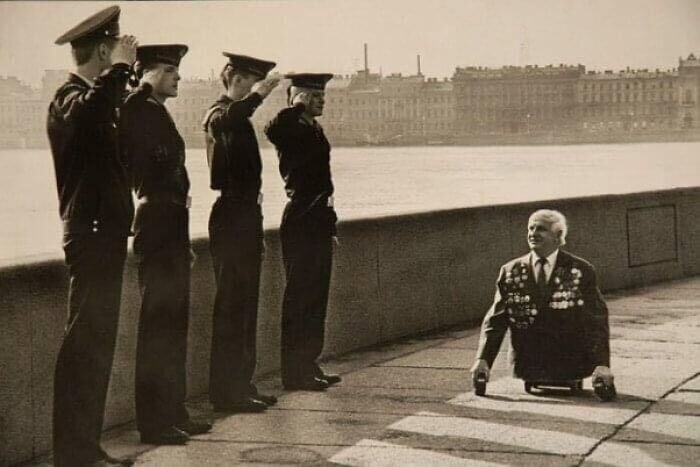
Image credits: fasc1nate
#47
The Statue of Liberty under construction
- You Might Also Like: 20 People Share Things Their Parents Taught Them That They Later Realized Weren’t Normal At All
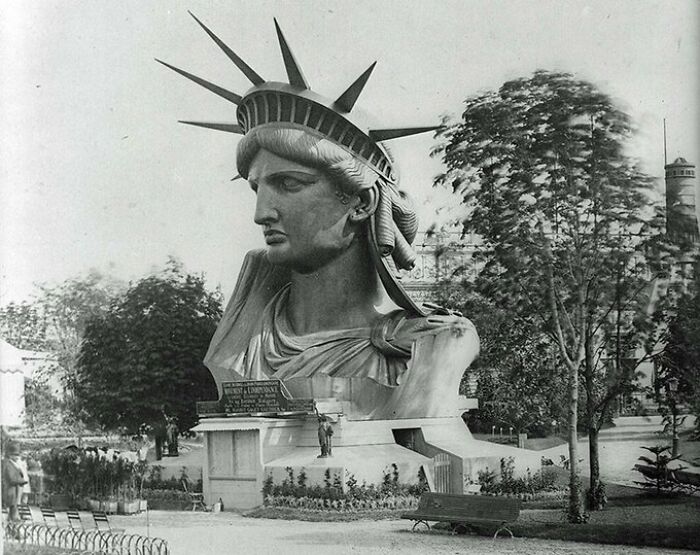
Image credits: fasc1nate







